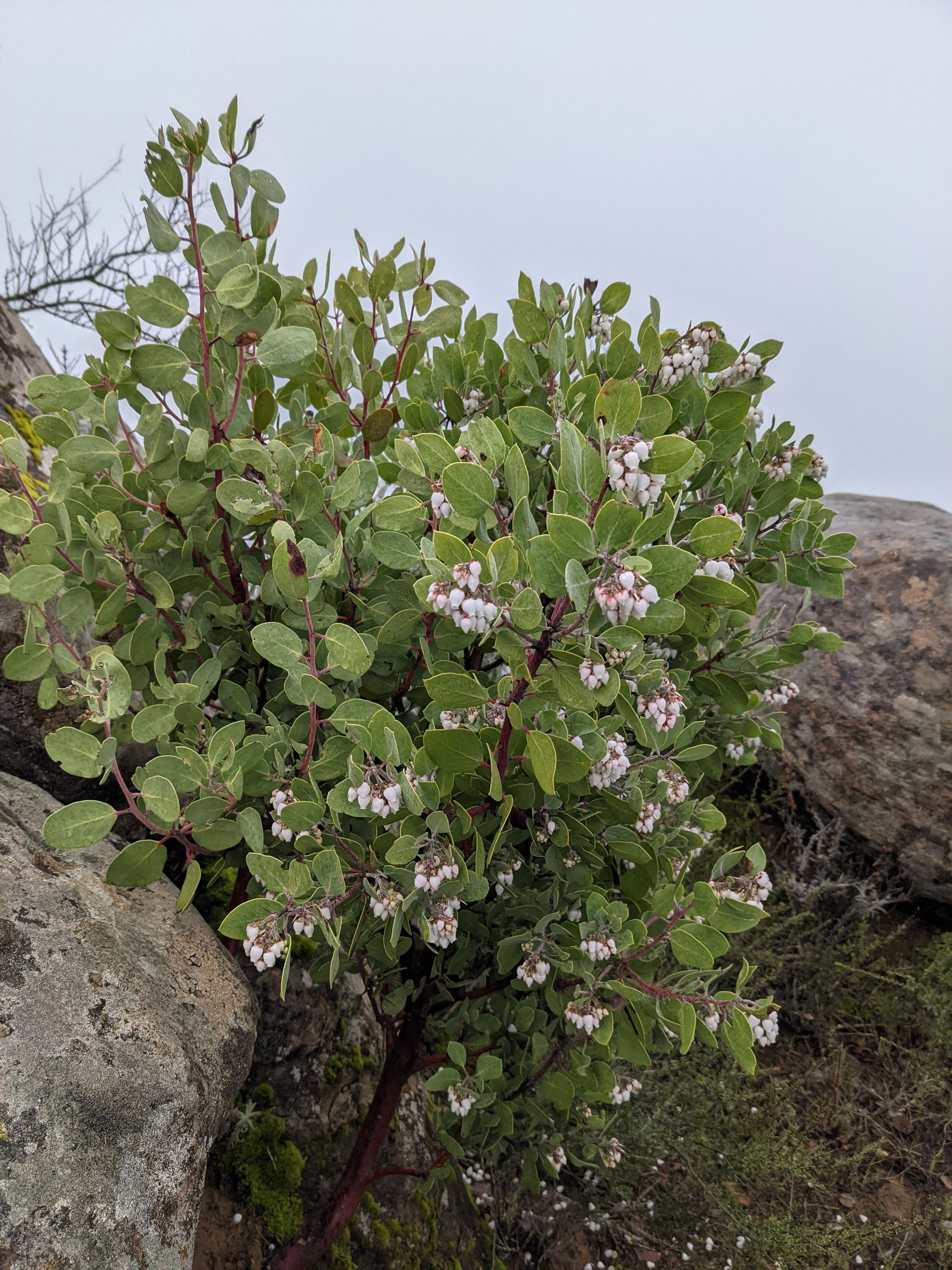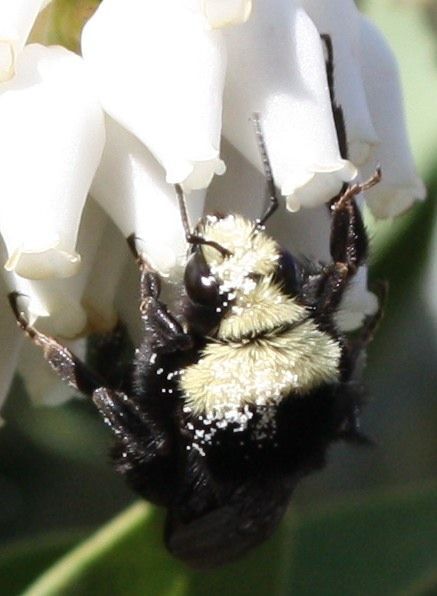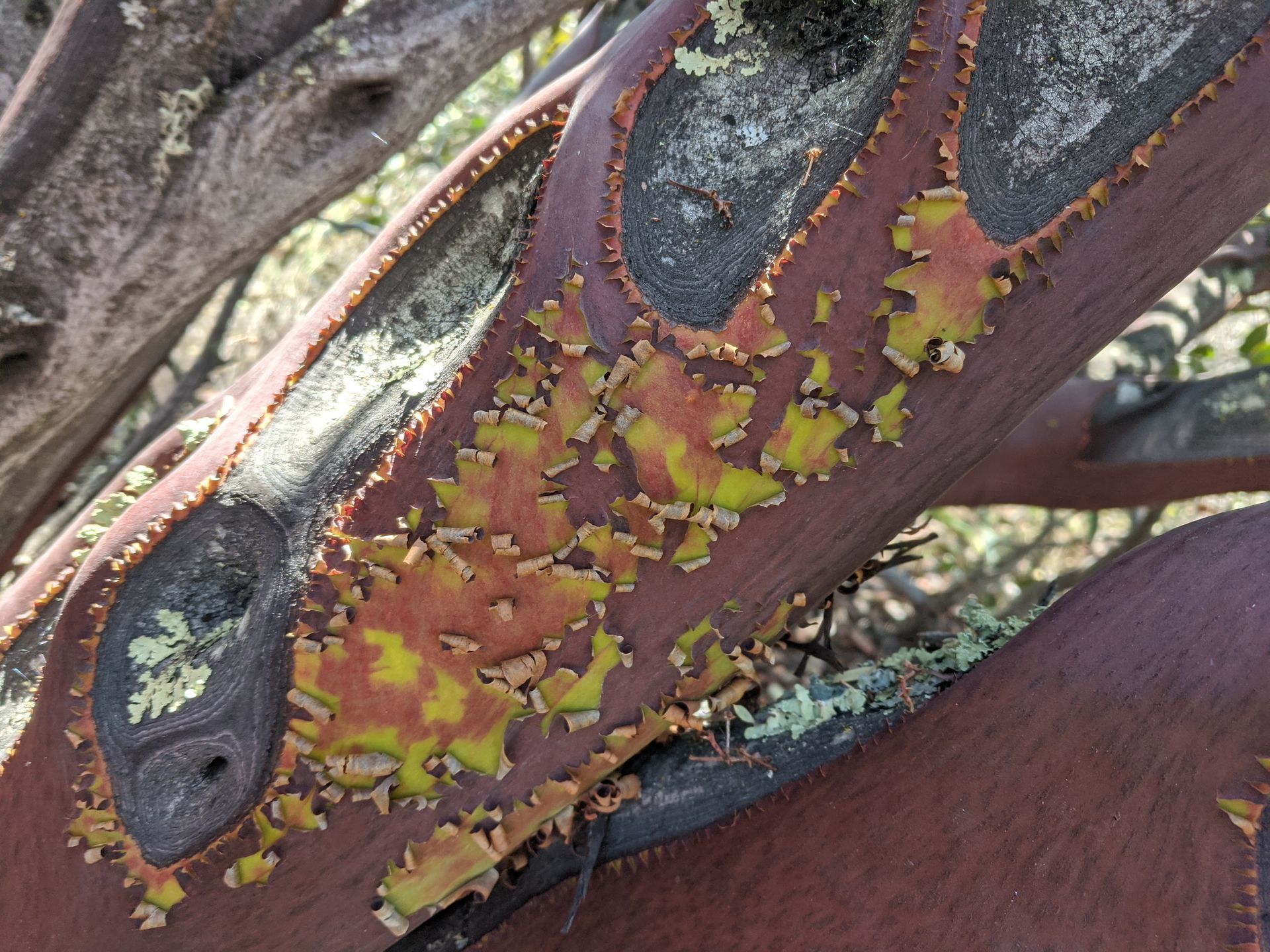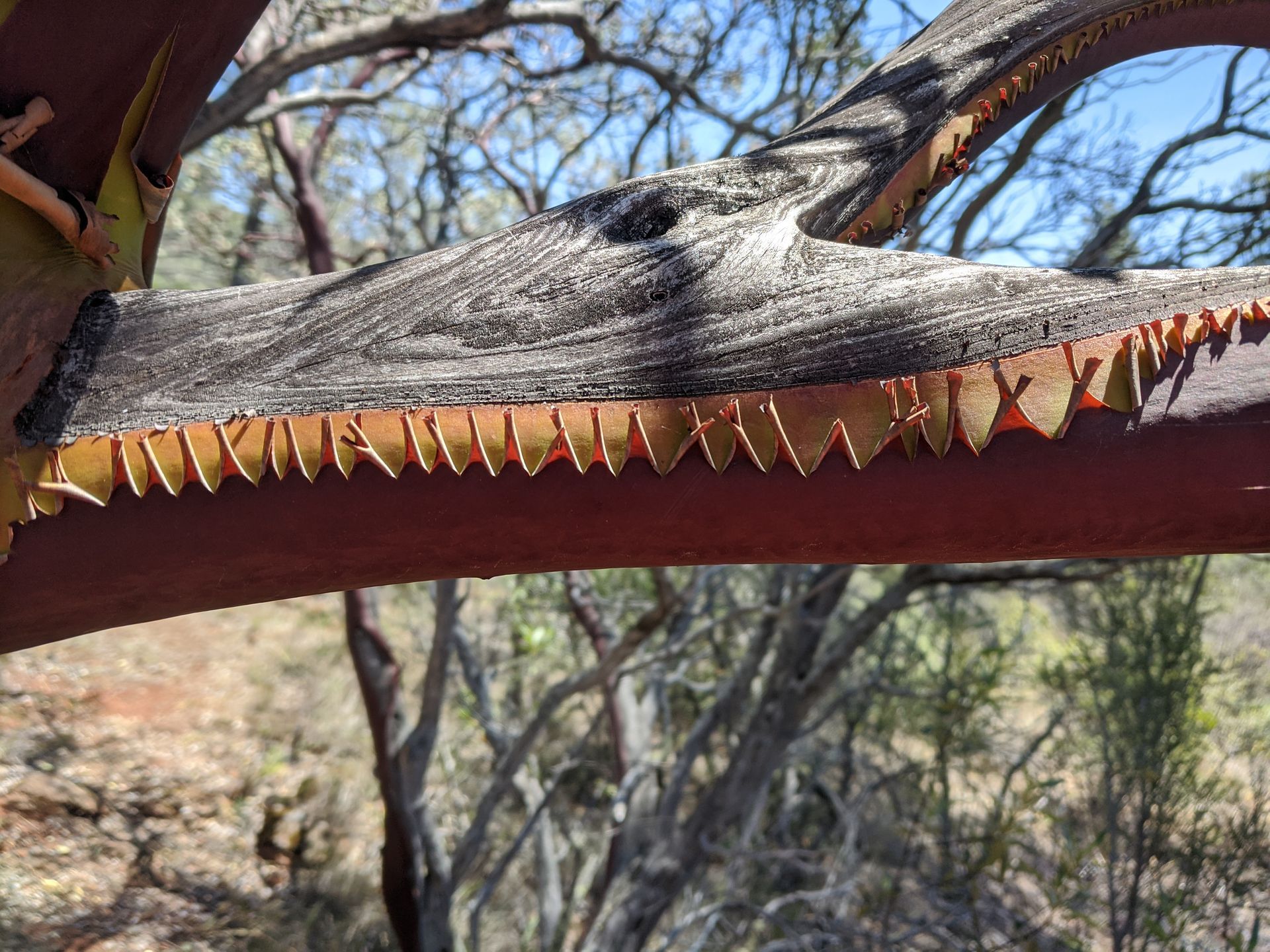Science Corner: Manzanita

A common manzanita reaches out into the fog on Fiske Peak by Geoff Benn
Shortly after moving from the Midwest to California in 2009, I encountered the strange and wonderful manzanita for the first time, while on a hike in Napa. It looked like something out of a Star Trek set, with smooth bright red bark that seemed as if it had been poured onto the sinewy branches from a hot candle. After completing the hike, I learned that the weird-looking shrubs were manzanitas and have been fascinated ever since.
Manzanitas, whose common name comes from Spanish for “little apple”, are small trees and shrubs in the genus Arctostaphylos. California is a global diversity hotspot for the genus, with 95 named species and subspecies. The bulk of that diversity is found in the coastal counties of California, particularly in the central coast region, where it is thought that ancestral populations of manzanitas became isolated on patches of poor rocky soil and eventually developed into separate species or subspecies. In Yolo County, the species most frequently encountered is the common manzanita ( Arctostaphylos manzanita ssp manzanita ).
Like many California plant species, manzanitas have evolved to cope with wildfire. About 1/3 rd of the species can resprout from burls at the bases of their stems following fires, but the majority are obligate seeders, meaning that the plants will generally not survive fires and instead depend on seeds lying dormant in the soil from previous years to carry on the next generation. These seeds, often buried by rodents, will remain in their dormant state until they sense chemicals produced by wood burning in a wildfire. Once this occurs, the seeds will germinate and have a chance to grow with greatly reduced competition.

Common Manzanita blooming along the Fiske Peak trail in early February by Geoff Benn
Manzanitas are one of the first plants to flower in the inner coast range, typically producing their characteristic diminutive bell-shaped blooms in January and February. We saw manzanitas in full flower along the Blue Ridge last weekend during Tuleyome’s Fiske Peak hike. The unusual shape, downward-facing orientation, and very small opening of the flower raises the question of how manzanitas are pollinated. While some studies have indicated a role for small insects, such as thrips, in manzanita pollination, it is thought that most species depend on bumblebees for pollination. This is because bumblebees are able to do buzz pollination, where the insect latches onto the mouth of the flower, then uses its flight muscles to vibrate the flower and release the pollen.

Bumblebee pollinating manzanita flowers by Laura Camp

Manzanita with peeling bark and exposed dead wood. Note the green layer beneath the peeling bark by Geoff Benn
While manzanita flowers are quite pretty, the most visually striking aspect of the plant has to be its bright red bark, which is paper-thin, peels off annually, and may even die away completely along parts of a branch. There are several potential benefits of having thin bark, including allowing for stem photosynthesis in tissues just beneath the bark and preventing buildup of fungi and other organisms on the plant. In old manzanitas, it is common to see ribbons of bark interspersed with patches of dead wood – this has not been well-studied, but it could be similar to the phenomenon observed in bristlecone pines, where some branches and the vascular tissue that connects them to the rest of the plant (found just below the bark) die off to conserve resources.

Manzanita with peeling bark and exposed dead wood by Geoff Benn
While perhaps not as widely known as bristlecone pines and redwoods outside of California, I think that the manzanita has earned a place in pantheon of iconic Californian plants. If you’d like to learn more about these fascinating plants, I encourage you to watch this CNPS lecture from Kate Marianchild and check out the excellent Field Guide to Manzanitas .
-Geoff Benn gbenn@tuleyome.org
Tuleyome Education Associate
Looking for more articles like this? Click the hashtag below!
RECENT ARTICLES






